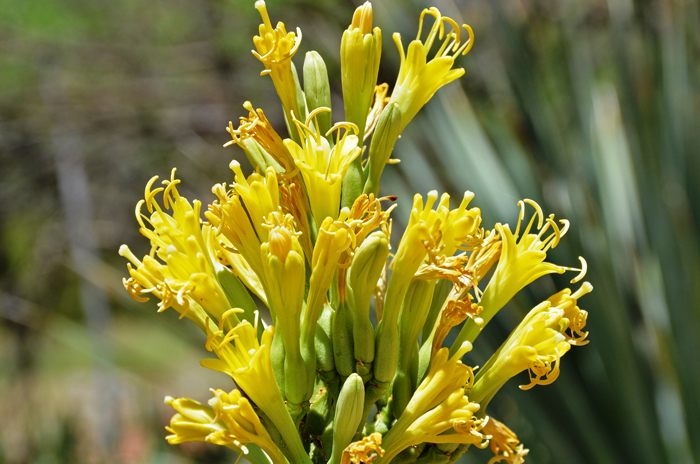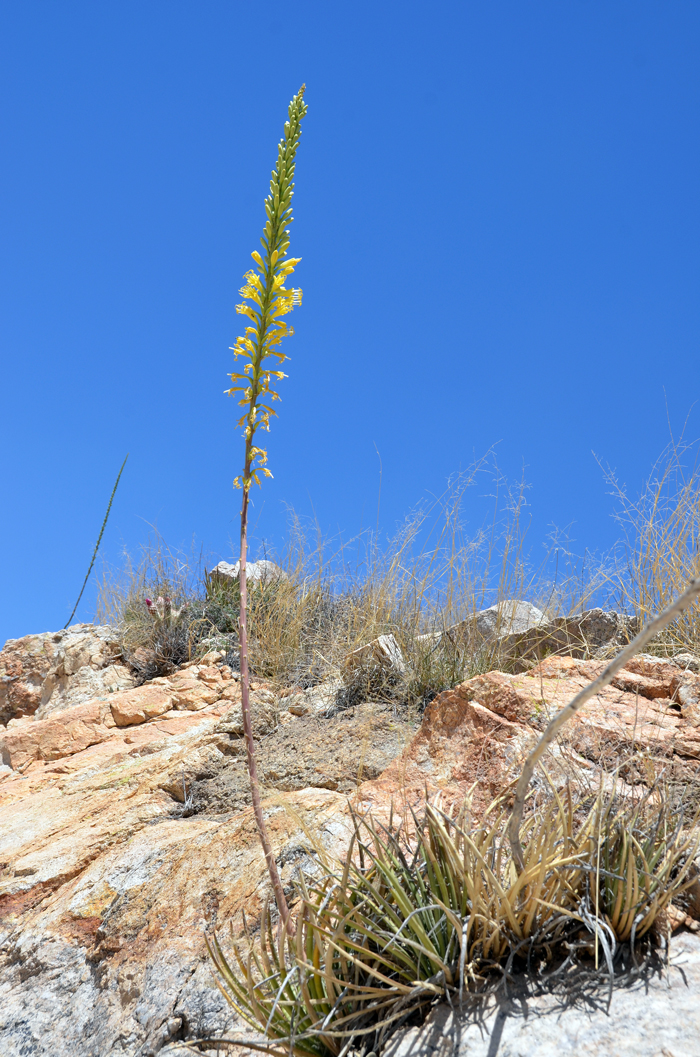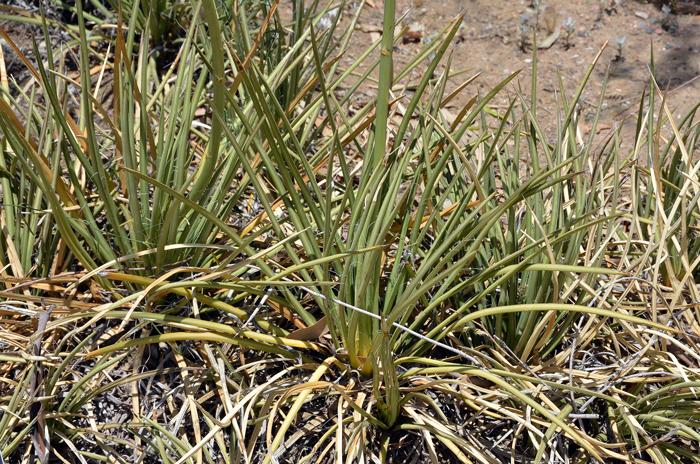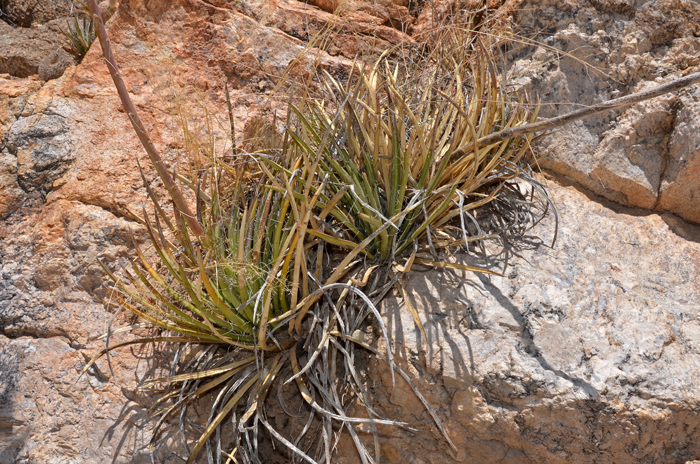Agave schottii, Schott's Century Plant




Scientific Name: Agave schottii
Common Name: Schott's Century Plant
Also Called: Schott Agave, Shindagger (Spanish: Amole, Maguey, Amolillo)
Family: Agavaceae, Agave or Century Plant Family (Reclassified to Asparagaceae)
Synonyms: (Agave geminiflora var. sonorae, Agave mulfordiana)
Status: Native
Duration: Perennial
Size: Flowering stalk 4 to 8 tall, more or less; plants approx. 4 feet wide by 2 feet high.
Growth Form: Forb/herb, shrub, subshrub; plants acaulescent, this species freely suckers; plants solitary rosettes or densely caespitose.
Leaves: Yellow, yellowish-green, dark green; leaves widest at base; shape linear; margins mostly with thread-like fibers(filiform).
Flower Color: Yellow (perianth); anthers also yellow; 1, 2 or more flowers per cluster, sweet scented; erect, funnelform; inflorescence mostly spicate, sub-spicate; often with branches toward upper end of flowering stalk (racemous-paniculate); fruit a capsule.
Flowering Season: May to July.
Elevation: 4,000 to 7,000 feet.
Habitat Preferences: Exposed mountainsides; gravelly to rocky places; desert scrub, grasslands and pinyon-juniper and oak woodland communities.
Recorded Range: Relatively rare in the United States where Agave schottii is limited in distribution to Arizona and New Mexico. In Arizona it is found in the southern parts of the state and in Graham County. In New Mexico it is found in the far southwest parts of the state in Hidalgo County. This species is also native to northwest Mexico, primarily Sonora.
North America & US County Distribution Map for Agave schottii.
U.S. Weed Information: No information available.
Invasive/Noxious Weed Information: No information available.
Wetland Indicator: No information available.
Threatened/Endangered Information: In North America Agave schottii is listed by the State of Arizona as salvage restricted under ARS § 3-903(B)(2).
In the Southwestern United States: Arizona has 12 species of Agave, California has 4 species, New Mexico has 5 species, and Texas has 9 species, Nevada and Utah have 1 species. All data is approximate and subject to taxonomic changes.
There are 2 varieties in Agave schottii;
Agave schottii var. schottii, Schott's Century Plant (AZ, NM);
Agave schottii var. treleasei, Trelease's Century Plant, (AZ).
Comments: The type species for Agave schottii from the Pajarito Mountains (Schott 1855), western Santa Cruz County, Arizona; the type Agave mulfordiana (Trelease) from the Rincon Mountains (Toumey 1894), Pima County, Arizona.
In Southwestern Desert Flora also see: Goldenflower Century Plant, Agave chrysantha; Lechuguilla, Agave lechuguilla; Parry's Agave, Agave parryi; Toumey's Agave, Agave toumeyana v bella; Toumey's Agave, Agave toumeyana.
Agave schottii has been used for food by indigenous southwestern United States peoples.
Papago Food, Unspecified. Pit baked and used for food.
See ethno-botanical uses at Native American Ethnobotany, University of Michigan, Dearborn.

